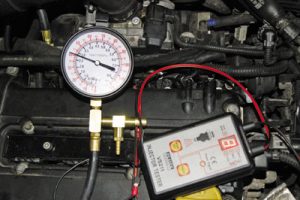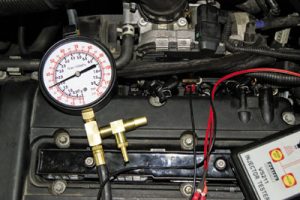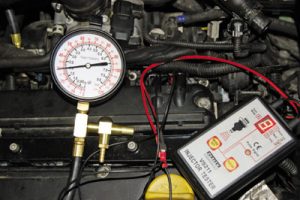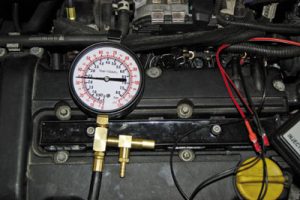
Andy Horwat, of Engine Tuning & Diagnostics in Swindon, investigates a cam sensor fault on a Vauxhall Astra 1.6, 56 plate.
An interesting case study recently came my way from a local garage. The car in question – a Vauxhall Astra 1.6 on a 56 plate – had been to another garage and was suffering from a cam sensor fault. It was explained to me that the sensor had been changed twice already but the problem still persisted.
There was a lack of power to the engine and the engine management light was on too, so I took the vehicle for a test drive to gather some more information.
The symptoms I discovered included a severe lack of power and hesitation and the garage owner (who was also an ex-Vauxhall mechanic) pointed out that the sensors were ‘aftermarket’ parts which were found to be incorrect.
Scoping the problem
 My next course of action was to test the vehicle using my trusty PicoScope, and also to carry out some other tests. From this I found that the cam and crank signal appeared with clean lines, however I wasn’t certain at this point that all was as it should be so I carried out a further visual inspection.
My next course of action was to test the vehicle using my trusty PicoScope, and also to carry out some other tests. From this I found that the cam and crank signal appeared with clean lines, however I wasn’t certain at this point that all was as it should be so I carried out a further visual inspection.
It appeared that the cam timing was correct, but after an hour of conducting checks my attention was drawn to the cam sensor itself. I conversed with my friend who was aware of these Eco-Tec engines, which are known to have variables to them. He spoke with the dealer who agreed and a replacement was ordered and fitted. The fault was then cleared and I took it for a test drive.
I noticed that there was an improvement to the performance but the engine was still lacking in power, so the car came back into the workshop for further investigation. The coil spark was as it should be, while the fuel pressure and flow and mass air flow meter was also checked – no issues.
 A fuel pressure check resulted in 50 PSI snap excel, with no drop in numbers there. It is important to carry this test out in that order as a faulty fuel pump may produce the right pressure at idle but, when put under load, there could be an extensive drop in pressure (as much as 10 PSI or more).
A fuel pressure check resulted in 50 PSI snap excel, with no drop in numbers there. It is important to carry this test out in that order as a faulty fuel pump may produce the right pressure at idle but, when put under load, there could be an extensive drop in pressure (as much as 10 PSI or more).
Now I needed to reconsider the symptoms: the drivability had improved but it wasn’t a complete fix as only the engine performance had improved. Over the years many Astra’s like this have come into my workshop so I know what to expect in terms of performance.
Testing the injectors
 For my next test I tried an ‘injector balance test’. The tool I used was an injector actuating tool, which has three settings (10- 30-100 millisecond) and for this test you need to connect the fuel pressure gauge, disconnect the harness for all the injectors and connect the actuating tool.
For my next test I tried an ‘injector balance test’. The tool I used was an injector actuating tool, which has three settings (10- 30-100 millisecond) and for this test you need to connect the fuel pressure gauge, disconnect the harness for all the injectors and connect the actuating tool.
On this occasion I used the scan tool to prime the pump, although recycling the ignition key will do. The test showed injector #1 dropped in pressure by 10 PSI, which is my benchmark. Injector #2 was 10 PSI, injector #3 showed a drop of 9 PSI and injector # 4 showed a drop of 6 PSI. It was here that I found the cause of the problem.
“A quality scope is a must have tool as it helped to verify cam and crank correlation and that the cam signals were incorrect.”This test supports the drivability problem, which is due to uneven fuel delivery, as it should be even across all cylinders with the manufacturer stating that a difference of 1.5 pounds is acceptable. In this case injector #4 was definitely faulty while #3 was on its way out. I recommended replacing both #3 and #4 to the customer, who agreed. The injectors were subsequently replaced and the performance of the vehicle was restored.
We then carried out a further test drive to confirm that the repairs made were correct. This is a typical example of an Eco-Tec engine with multiple problems – cam sensor failures are all too common and it is clearly something that caught the previous two garages out. There are at least three variants to this engine or system design and they share similar problems. The original cam sensor had probably failed and a replacement aftermarket part – which was not compatible with the system – only made matters worse.
 It’s important that the test drive, symptoms, information and a correct procedure are put into place. In my opinion, a scan tool wouldn’t have proved very helpful in this particular case; in fact using trouble codes to ‘diagnose’ the problem is what caused the previous garages to run into trouble in the first place.
It’s important that the test drive, symptoms, information and a correct procedure are put into place. In my opinion, a scan tool wouldn’t have proved very helpful in this particular case; in fact using trouble codes to ‘diagnose’ the problem is what caused the previous garages to run into trouble in the first place.
For this reason I believe a quality scope (in my case, the Pico 4000) is a must-have tool as it helped to verify cam and crank correlation and that the cam signals weren’t correct. The other key here was the correct information from the supplier.
The injector actuating tool also proved invaluable, as it took me ten minutes to check all four injectors and to conclude my repair.









